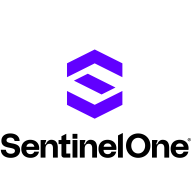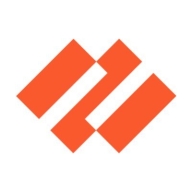


Cortex Cloud by Palo Alto Networks and Red Hat Advanced Cluster Security for Kubernetes compete in the cloud security category. Cortex Cloud seems to have the upper hand due to its extensive security features and integration capabilities, especially in multi-cloud environments.
Features: Cortex Cloud offers advanced workload protection and security posture management, monitoring configurations across environments, automated forensics, and enhanced security responsiveness. Red Hat Advanced Cluster Security is notable for detailed network mapping and easy Kubernetes cluster management, providing valuable insights into container communication and security details.
Room for Improvement: Cortex Cloud could enhance its UI intuitiveness, expand automation, and improve role-based access control. Transparency and feature alignment are also areas needing improvement. Red Hat Advanced Cluster Security could benefit from better documentation, increased integration flexibility, and improvements in its pricing structure.
Ease of Deployment and Customer Service: Cortex Cloud supports deployment across public, private, and hybrid clouds. While generally praised for technical support, responsiveness can vary by region. Red Hat Advanced Cluster Security is mainly used in on-premises and hybrid clouds with positively rated customer support, although some integration challenges exist in current IT environments.
Pricing and ROI: Cortex Cloud is a premium solution with a resource-based licensing model, deemed expensive but yielding strong ROI through risk reduction and efficiency. Red Hat Advanced Cluster Security is cost-effective, especially when bundled with OpenShift Platform Plus, providing notable value for Kubernetes security.



SentinelOne Singularity Cloud Security protects cloud workloads, offering advanced threat detection and automated response. It integrates seamlessly with cloud environments and secures containerized applications and virtual machines against vulnerabilities.
SentinelOne Singularity Cloud Security is renowned for its efficiency in mitigating threats in real-time. The platform integrates effortlessly with existing cloud environments, ensuring robust cloud security management with minimal manual intervention. Securing containerized applications and virtual machines, it excels in threat intelligence and endpoint protection. However, improvements are needed in performance during high workload periods, and more integrations with third-party tools and better documentation would be beneficial. Users often find the installation process complex, support response times slow, and the dashboard's navigation unintuitive.
What are the key features of SentinelOne Singularity Cloud Security?In specific industries, SentinelOne Singularity Cloud Security is implemented to safeguard critical data and infrastructure. Organizations in finance, healthcare, and technology depend on its real-time threat detection and automated response to protect sensitive information. Its ability to secure containerized applications and virtual machines is particularly valuable in dynamic environments where rapid scaling is necessary.
Prisma Cloud by Palo Alto Networks delivers comprehensive security for cloud environments, focusing on workload protection, identity creation, and seamless AWS integration. Its cloud visibility and control, combined with thorough vulnerability scanning, help maintain robust security across multi-cloud platforms.
Prisma Cloud provides essential capabilities for cloud security posture management, container security, and compliance monitoring. Enterprises utilize it to secure cloud configurations, detect vulnerabilities, and ensure regulatory compliance, spanning AWS, Azure, and Google Cloud. Its runtime management, identity-based micro-segmentation, and threat detection enhance cybersecurity. Despite needing improvements in documentation, integration complexities, UI, and the need for role-based access control refinement, it remains pivotal for securing assets across cloud infrastructures, particularly with its capabilities for vulnerability scanning and CI/CD pipeline integration.
What are the key features?
What benefits or ROI should users expect?
In industries like finance, healthcare, and retail, Prisma Cloud is implemented to strengthen cybersecurity measures, facilitate regulatory compliance, and enhance governance. Organizations leverage its features to secure sensitive data, monitor configurations, and integrate security processes within CI/CD workflows, ensuring robust protection across complex cloud infrastructures.
Red Hat Advanced Cluster Security for Kubernetes is a Kubernetes-native container security solution that enables your organization to more securely build, deploy, and run cloud-native applications from anywhere. With its built-in security across the entire software development life cycle, you can lower your operational costs, reduce operational risk, and increase developer productivity while improving your security posture immediately. In addition, Red Hat Advanced Cluster Security integrates with security tools and DevOps in an effort to help you mitigate threats and enforce security policies that minimize operational risk to your applications. It also enables you to provide developers with actionable, context-rich guidelines integrated into existing workflows, along with tooling to support developer productivity. The solution is suitable for small, medium, and large-sized companies.
Red Hat Advanced Cluster Security for Kubernetes Features
Red Hat Advanced Cluster Security for Kubernetes has many valuable key features. Some of the most useful ones include:
Red Hat Advanced Cluster Security for Kubernetes Benefits
There are many benefits to implementing Red Hat Advanced Cluster Security for Kubernetes. Some of the biggest advantages the solution offers include:
Reviews from Real Users
PeerSpot user Igor K., Owner/Full Stack Software Engineer at Maraphonic, Inc., says, “The solution allows teams to create their own virtual spaces and share resources. The most valuable feature is the ability to share resources.”
We monitor all Container Security reviews to prevent fraudulent reviews and keep review quality high. We do not post reviews by company employees or direct competitors. We validate each review for authenticity via cross-reference with LinkedIn, and personal follow-up with the reviewer when necessary.